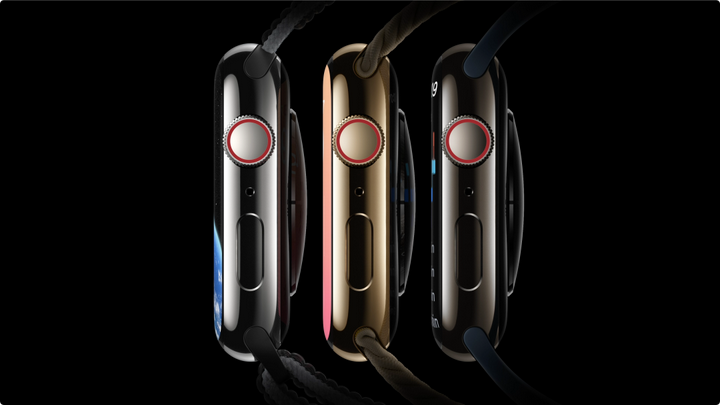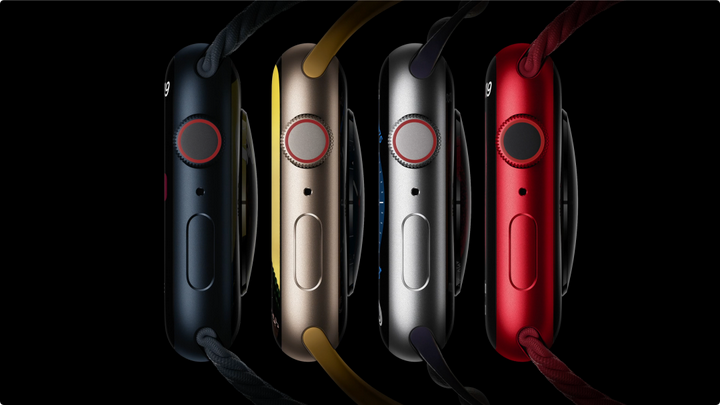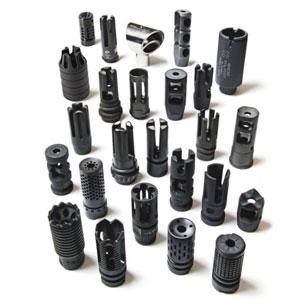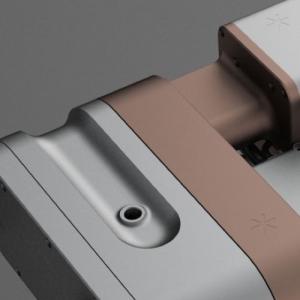While titanium and ceramic options have caught the attention of guests on Apple Watch Series 2 through 6, aluminum and stainless steel have remained consistent and are the most frequently purchased and debated parts of the watch case.
There are minor changes in the technical characteristics of both cases, but other characteristics such as price, durability, weight and style are quite different.
If you're confused about which of the two is the better choice, here's a detailed guide to help you in your search.
Today, the CNC precision machining factory - JXGC tells you how to choose between the aluminum alloy version and the stainless steel version of Apple Watch!
Let’s first take a look at what stainless steel is?
Stainless steel is an iron alloy with a minimum complex content of 10.5%. The complex content produces a layer of oxide lattice film on the surface of the steel, called a passivation layer. This layer prevents corrosion on the steel surface. The greater the amount of grids in the steel, the greater the corrosion resistance.
Stainless steel also contains various other elements such as carbon, silicon and silicon. Other elements can be added to increase etchability (like) and formability (tear), which is the ability to change the shape of a product without causing permanent damage to it. The main advantage of stainless steel is that it does not corrode or rust as easily as regular steel, and due to this unique property, it is widely used in many industries, including construction, automotive, and other industries.
The stainless steel version of the Apple Watch comes in three colors:

Let’s take a look at what aluminum alloy is?
Aluminum alloys are known for their low density and ability to resist corrosion through purification phenomena, but their aluminum alloys are critical to the aerospace industry and are also important in the transportation and construction industries such as building cladding and facade framing. Aluminum alloy is very shiny, similar to silver, in that it preferentially absorbs far ultraviolet radiation while reflecting all visible light, and therefore does not impart any significant reflected light, unlike steel and gold, which are other alloys of silver. An important feature is its low density, 2.70g/cm3. Aluminum is a relatively soft, durable, lightweight and ductile metal.
Aluminum alloys are non-magnetic and do not ignite easily. The new film acts as a good reflector (approximately 92% of visible and visible light), and an excellent reflector (up to 98%) of mid- and far-infrared radiation. The national service strength of ShenAluminum is 7-11 megapixels, while aluminum The alloy has a yield strength of 200 MB before 600 MB. Aluminum alloy has about one-third the density and stiffness of steel. It is easy to machine, cast, draw and extrusion. The corrosion resistance of aluminum alloy can be very Good, because when the metal is in the air, an oxidized surface layer will be formed, which effectively prevents further oxidation. In a process called oxidation, due to the electrochemical reaction with alloy steel, The strongest alloys are less resistant to corrosion.] This corrosion resistance is greatly reduced by aqueous salts, especially in the presence of different alloys.
The aluminum version of Apple Watch comes in four colors:

Ten major differences between stainless steel and aluminum alloys:
1. Strength to weight ratio, aluminum is generally not as strong as steel.
2. Corrosion resistance, stainless steel has stronger corrosion resistance.
3. Thermal conductivity, aluminum alloy has better thermal conductivity.
4. Cost, aluminum alloy is cheaper.
5. Processability, aluminum alloy is softer and easier to process.
6. Welding, stainless steel is relatively easy to weld.
7. Thermal performance, stainless steel is more resistant to high temperatures.
8. Electrical conductivity, aluminum alloy has better electrical conductivity.
9. Strength, stainless steel is stronger.
10. Impact on food,Aluminum may cause food to deteriorate.
Due to the chemical and physical properties of its raw materials, we can see that the stainless steel and aluminum alloy versions of Apple Watch have the following differences:
1.Durability and strength
Aluminum casings are softer than stainless steel and are therefore more prone to noticeable cracks. However, this isn't a big deal as it's still difficult to break the aluminum casing.
Aluminum tends to have an advantage when it comes to the appearance of minor scratches and micro-abrasions. The aluminum case is not scratch-resistant, but has a smooth, matte surface that ensures no minor scratches will appear on the watch.

Stainless steel is much harder than aluminum, which prevents it from cracking or shattering on impact. This makes it more durable, especially for use in sports or other forms of physical exercise.
However, its smooth appearance makes it more prone to minor scratches and micro-abrasions. Fortunately, the scratches are less noticeable when wearing the Graphite Apple Watch, but if you have the silver one, the scratches will be noticeable.
Fingerprints also stand out more on the shiny stainless steel surface. You can solve this problem by purchasing an Apple Watch case or case.
Proper maintenance is also required, so make sure you clean your Apple Watch regularly.
2. Weight
On average, stainless steel is two and a half times denser than aluminum, making it heavier than either case. When you compare the two options for the Apple Watch Series 6, the stainless steel version is about 10 grams heavier than the aluminum version, weighing 52.8 grams, while the 42mm aluminum version weighs 42.4 grams.
If you don't want to feel the weight of the watch on your wrist, or have smaller wrists in general, aluminum is best for you. A lighter coating is also useful if you are an athlete or exercise regularly.
3. Display

Stainless steel Apple Watch with sapphire crystal display. This is a hard and sturdy material that provides good protection for the display and is highly resistant to scratches. Sapphire crystal can only penetrate materials as hard as diamond.
The aluminum Apple Watch uses Ion-X tempered glass, which is not as strong as sapphire crystal and therefore more prone to large cracks.
4.Style
Compared to aluminum, stainless steel Apple Watch is a better choice. It has a glossy, sparkling surface and has an aesthetic effect. If you are a traditional watch fanatic, or want something visually satisfying, then the stainless steel version will be ideal for you.
On the other hand, the aluminum Apple Watch is decidedly unobtrusive. If you prefer a matte finish to a shiny one, you should go for the aluminum Apple Watch.
5. Connectivity

With the aluminum Apple Watch, you can only choose GPS or GPS and Cellular, while the stainless steel Apple Watch only lets you choose GPS and Cellular.
A GPS-only watch only allows you to receive calls and text messages when connected to your iPhone via Wi-Fi or Bluetooth. GPS and Cell Phone Watch lets you use these features with or without your iPhone. Series 6 allows streaming of Apple Music and Podcasts over GPS and cellular networks.
To use cellular phone functionality on your Apple Watch, you need to pay a monthly fee. Beyond that, the availability of GPS and cellular options automatically increases the price of the stainless steel Apple Watch, even if you choose not to use cellular.
You can select the "GPS only" option for the aluminum Apple Watch and choose not to pay a monthly fee. The price will also be lower than stainless steel due to the non-porous option.
6. Price point
Prices vary by watch series, but when comparing aluminum and stainless steel Apple Watch models, you can see a general trend. The aluminum version is cheaper than the stainless steel version.
For Apple Watch Series 3, the aluminum Apple Watch starts at $199. The cheapest stainless steel version is only $469.
For Series 6, the Apple Watch starts at $399 for aluminum and $699 for stainless steel.
7.Color

In addition to a selection of Apple Watch bands, the cases are available in some top-notch color options.
For Series 6, the aluminum Apple Watch comes in a wider variety of colors. It's available in red, blue, space gray, silver, and gold, while the stainless steel Apple Watch is limited to gold, silver, and graphite.
8.Availability
Apple currently sells only three watch series: Apple Watch Series 3, 6 and SE.
All three series have options in aluminum and stainless steel models. However, this is not the case with the Apple Watch Nike and Apple Watch Hermès collections within each collection.
Apple Watch Nike Series 6 and Apple Watch Nike SE are only available in aluminum models, while Apple Watch Hermès is only available in stainless steel.
9.Charging Hockey Puck
The charging stand for the aluminum Apple Watch is made of plastic. It is thicker than the stainless steel loading pan of the stainless steel model which has a smooth appearance.
Aluminum or stainless steel: Which Apple Watch should you buy?
There are many factors to consider when deciding between the two, and both materials have their pros and cons to suit everyone's personal preferences.
If you want a cheaper alternative, a wider variety of colors, a matte finish, minimal scratches, and a lightweight Apple Watch, the aluminum model will be ideal for you. This is also a more economical option if you want to upgrade to a newer model every year or so.
If you're willing to spend more for a sleeker, shinier Apple Watch with a classic look, high-strength materials, and heavier weight, be sure to choose the stainless steel Apple Watch.




